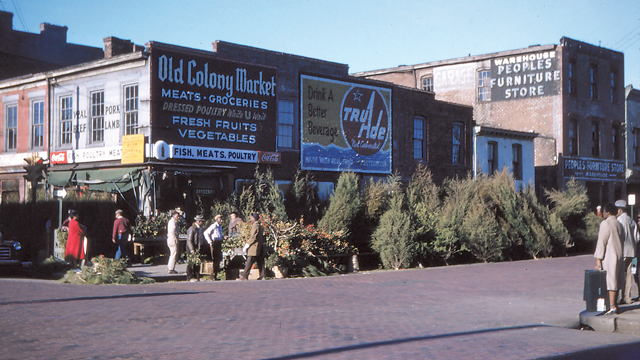In 1871, lines were drawn around a new voting ward. Before the Emancipation, the area had been home to German, Italian, and Jewish immigrants, in addition to a large population of free blacks. After Emancipation, freed enslaved persons, unwelcome elsewhere in the city, settled in the neighborhood. The African American community, newly educated and emboldened by federal Reconstruction programs, was thus contained in Jackson Ward, a new voting district in Richmond.
In its effort to contain the political power of the black community, however, the city unintentionally created a neighborhood that, for the next century, would be the home base for black identity, creativity, and empowerment. From its banks and newspapers to its theaters and hotels, the district grew into a nationally prominent economic and cultural hub. The Hippodrome Theatre welcomed Ella Fitzgerald, Louis Armstrong, and James Brown. Influential residents such as Maggie L. Walker hosted civil rights leaders like Booker T. Washington in her parlor. Several black-owned banks, including Walker’s, provided loans to small African-American-owned businesses that were regularly turned away by banks operated by whites.
Despite all this, Jackson Ward perhaps grew too powerful for its own good. Through the 1950s, so-called urban renewal projects began to disproportionately target the district through eminent domain. Hundreds of families lost their homes to the construction of the Richmond Coliseum and I-95, which literally cut through the heart of the established neighborhood. Today, the forty remaining blocks have been listed as a National Historic Landmark District. It’s the largest in the nation designated for African American historical significance.

V_91_42_2404 The Valentine




